Honours and awards citations - Winter Scientific Meeting 2020
Professor Henrik Kehlet - Honorary Membership

A colorectal surgeon, yet he is commonly referred to as either Denmark’s most famous Anaesthetist or the Father, now grandfather of enhanced surgical recovery.
His publications in the Lancet in 1995 ‘Recovery after laparoscopic colonic surgery with epidural analgesia, and early oral nutrition and mobilisation’ and the British Journal of Anaesthesia in 1997 ‘Multimodal approach to control postoperative pathophysiology and rehabilitation’ say it all. Fast track surgery, as it was originally termed has now become a standard of care some 25 years after Professor Kehlet practiced and then widely promoted the concept.
He has published over 1,000 peer-reviewed publications on the pathophysiological mechanisms of surgical recovery and has demonstrated major clinical benefits with decreased need for hospitalisation and morbidity, and with secondary economic health care savings. The concept represents one of the most important innovations in surgery and is acknowledged with formation of national societies around the world and a sharp increase in scientific publications.
Professor Kehlet’s work has led to global improvements in outcomes from surgery. His is a most worthy recipient of this award.
Monty Mythen
Professor of Anaesthesia and Critical Care
University College London
Mr Alex Ruck Keene - Association Award

Alex Ruck Keene is a barrister practising at 39 Essex Chambers in London, with a specialist interest in mental capacity and mental health law. He has been instructed by, or has advised, the Department of Health, NHS bodies, local authorities and the Official Solicitor, and the Association of Anaesthetists is lucky enough to have benefited from his expertise also over the last few years.
I first encountered Alex on the Association’s Consent Working Party. It was soon pretty clear that he was going to be a huge asset to the group, with his clarity of thought and detailed knowledge of the topic. In fact, he rapidly became indispensable, as the inevitable queries arose about the finer points of law – especially when it came to pulling together the different legal frameworks in the devolved nations and Ireland. Alex's comments and advice are always incisive, helpful and gracious, and he is one of the fastest email responders I’ve encountered, day or night.
His presentation on The Mental Capacity Act at WSM 2017 is one of the clearest, most informative and entertaining videos about law on the Association's video platform, Learn@, and well worth watching (see https://learnatanaesthetists.org/video/play/733).
When the consent guidance had been published, and he was asked to suggest a colleague or contact whom we might approach to join the Association's working party on Jehovah's Witnesses and blood transfusion, he typically replied (within seconds) with an offer to help out himself; this was gratefully accepted and he proved as useful on that working party as on the consent one.
Alex has written textbooks, handbooks, chapters, articles and policy documents, and teaches and lectures widely, including via honorary/visiting positions at the University of Manchester and King's College London. The Association is both fortunate and grateful for the hard work that he has devoted to all those working in the field in general, and to the Association in particular, for which he truly deserves the honour of a Foundation Award.
Dr Steve Yentis
Consultant Anaesthetist
Dr Elizabeth McGrady - Association Award
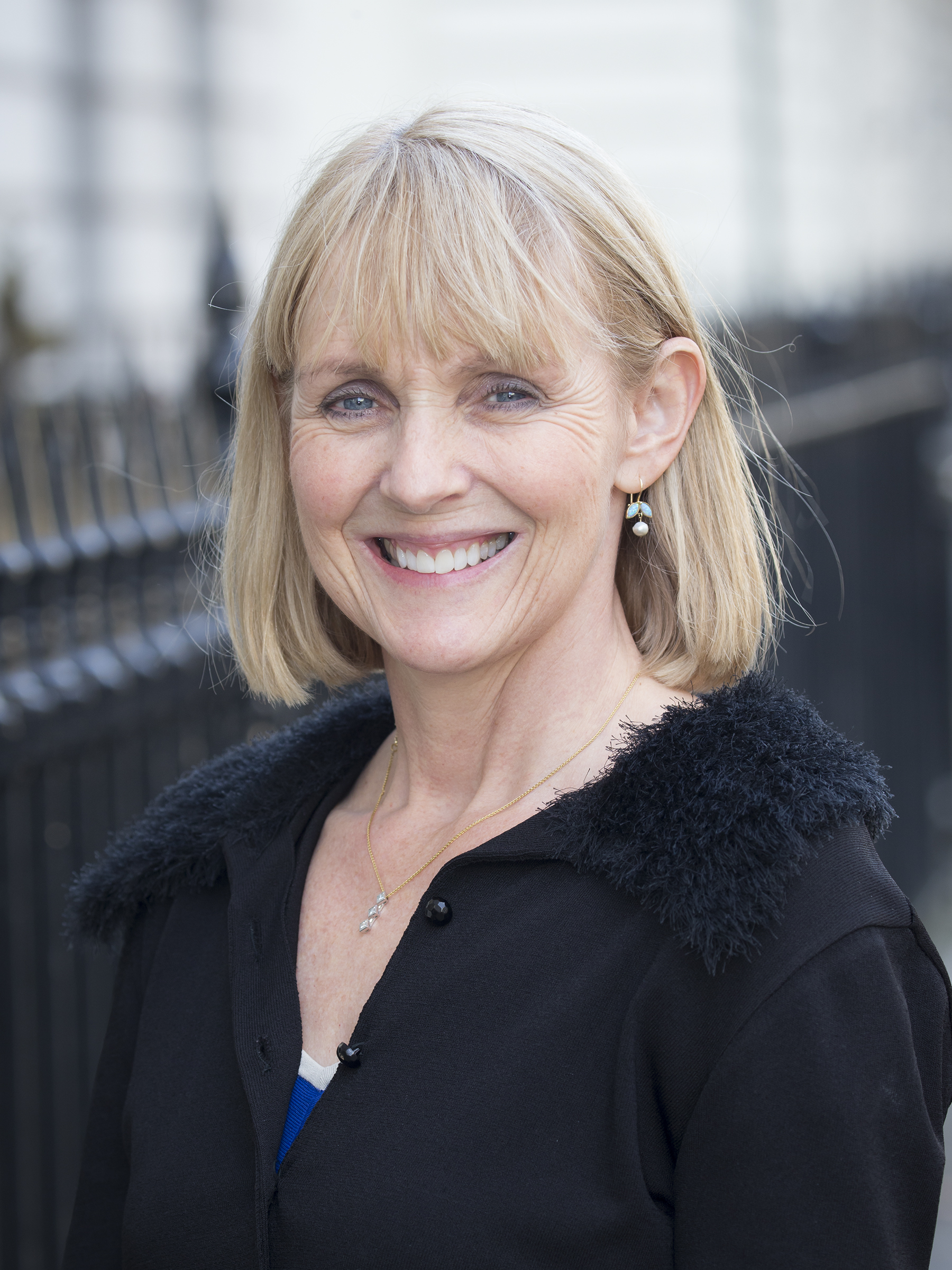
It is my great pleasure to write this citation for Dr Elizabeth McGrady in honour of her receiving the Association Award. This award is in recognition of her ‘significant contribution to the Association, its objects and goals, and its members’.
Known better as Liz, she joined the Association Council in 2015 as one of 12 nationally elected members. The Association quickly benefitted from Liz’s extensive experience of medico-political and clinical strategy matters. She brought to the committee a wealth of experience from her time as a MBRRACE assessor and report author – a role that gave her incisive analysis and interpretation skills which served to raise the standard of care for pregnant mothers and neonates. Liz used these skills to great effect in committee where her ability to sum up and offer the ‘it’s obvious this is what we need to do’ action plan brought welcome solace to a fraught committee chair.
Liz has a full and impressive teaching and education portfolio. The Association was quick to harness Liz’s skills by appointing her as Board lead for the Core Topics education programme. The members place regional education events high up the list of membership benefits. Liz ensured that the regional programme was delivered at the highest standard whilst also increasing its reach into newer territories (Aberdeen is on that map). Although hardly broaching new geography, Liz was board lead for the very successful Trainee Conference (formerly known as GAT) held in Glasgow.
By standing for national election, it is accepted that there will be an element of additional work. Liz’s commitment and graft given to the specialty is well outlined in her many postgraduate education roles, her Scottish Government advisory roles and her significant publication record. Liz was president of the Scottish Society of Anaesthetists during her term of office at the Association. At all times she managed her loyalty to both organisations in a truly professional manner. The Association and the Scottish Society of Anaesthetists now hold biannual education meetings thanks to the careful stewardship of Liz and colleagues in the Scottish Standing Committee.
Liz was a member of the new-at-the-time Membership Committee as well as Education Committee, Heritage and Museums Committee and the Environment and Sustainability Task Group (now a full committee). Throughout, Liz has demonstrated exceptional commitment to the Association and has carried out duties effectively and in a very personable manner. She has achieved a considerable amount and thus contributed to the current and future success of the Association.
Dr Kathleen Ferguson
President
Association of Anaesthetists
Dr Eoin Kelleher - Association Award

Eoin Kelleher has been a great friend and colleague since we started training in anaesthesia together in 2015. I am so delighted to see him recognised by the Association for his contributions to anaesthesia over the last two years.
Eoin is a native of Dublin, and graduated from the Royal College of Surgeons of Ireland in 2014. After internship, he started the anaesthesia training programme in 2015, where he clinically and academically excelled, notably winning the gold medal in the Membership of the College of Anaesthetists examination in 2016. He joined the Association Trainee Committee (then known as GAT) in 2017, and through this became a co-opted member of the Committee of Anaesthesia Trainees of Ireland (CAT). He spent two years as a great team member, representing trainee anaesthetists on both sides of the Irish Sea.
As part of the Association Trainee Committee, Eoin conducted a study of Irish trainees on transporting critically ill patients. This article, published in Anaesthesia, has been instrumental as an impetus to improve formal training in this aspect of our work. As a member of CAT in 2018-2019, Eoin helped conduct a survey of health and wellbeing among anaesthesia trainees in Ireland. Using the data from this we have been able to make tangible changes to training in Ireland to promote health and wellbeing. He also regularly contributed to the quarterly newsletter, the CAT News, and as a great debater, he was always a fantastic asset to the CAT during any important meetings.
Quite frankly, Eoin defies the laws of time. He manages to squeeze more into each day than any other person I know. As well as full-time training as an anaesthetist, he manages to pursue his many hobbies and interests. As a talented cartoonist, he contributes regularly to print and online publications for both medical and non-medical press. If a picture paints a thousand words, Eoin has filled libraries with his drawings. He has also published two books – A Journey Through the Brain and the most recent Journey Through the Body, which integrate perfectly his love of drawing and medicine. He has a keen interest in current affairs, politics and debating and many of his cartoons reflect a refreshing and witty perspective on the issue of the day.
During his time off, he enjoys traveling the world, hiking and hillwalking. In 2018, he completed the Three Peaks Challenge, with members of the Association Trainee Committee to raise funds and awareness for SAFE Africa. This year in 2019, he was awarded a scholarship to complete a Masters in Global Health Science and Epidemiology at Oxford University, which he commenced in September.
Eoin manages all this with an air of nonchalance, with fairly impeccable style! He is a man who cares greatly for people, who is not afraid to speak up and represent his peers for the greater good. Eoin is a fantastic colleague, a born leader and a great team player and is most deserving of this award. Through tireless work on both the UK and Irish trainee committees, he has perhaps unknowingly impacted the lives of many trainees, and their patients, for the better. Míle buíochas, a chara,
Dr. Sinéad Farrell
Former Chair
Committee of Anaesthesia Trainees 2018-2019
Hilary Riches - Association Award
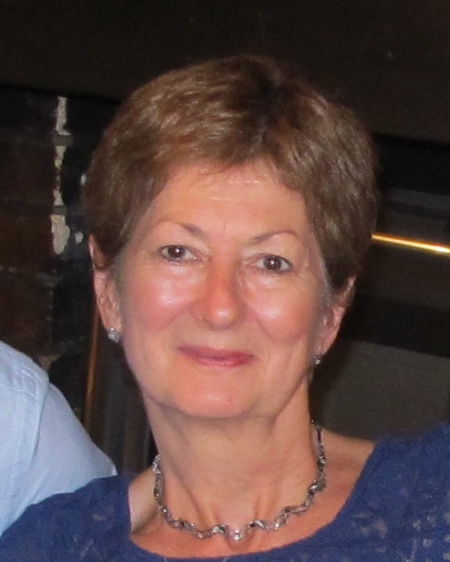
Hilary Riches has been a long standing volunteer at the Anaesthesia Heritage Centre.
The volunteer group is of great importance to the Heritage Centre as they provide a wide range of activities for members of the public and members of the Association too. Without them we would only be able to offer a much reduced service. Their experience and dedication serves to enrich the experience of all who attend the Centre.
The Anaesthesia Museum began when anaesthetic instrument designer and manufacturer A Charles King donated his collection of historical equipment to the Association of Anaesthetists in 1953. King was a recognised world authority on both modern and historic anaesthetic equipment. It was with great delight therefore that staff were able to welcome Hilary, King’s granddaughter, to the team of volunteers.
Hilary has worked tirelessly to assist with work such as staging and dismantling temporary displays, packing objects for travelling displays and helping to produce an up to date inventory of the collection. The inventory is of particular importance as knowing what we have in the collection, recording locations in which items are kept and checking their condition is an important piece of work that allows us to retain our Accredited status with Arts Council England. The work takes a great deal of time and needs to be done carefully and accurately. Hilary’s contribution to this task has been very gratefully received.
One of the first travelling exhibitions Hilary helped produce showed the original A Charles King collection and it was supplemented by some photographs she provided from her personal collection.
Hilary has been a volunteer who can be relied upon to help out with whatever needs to be done. She has therefore helped to tidy the Heritage Centre area and to help us ensure that it looks its best at all times. She has also attended many of our volunteer meetings and contributed to discussions about how our work should progress. She is a cheerful, helpful, active member of a very strong team and is respected by her peers.
It is a great pleasure to see Hilary’s service to the Association of Anaesthetists rewarded with a well deserved Foundation Award.
Ms Patricia Willis
Dr Kevin Bailey - Association Award
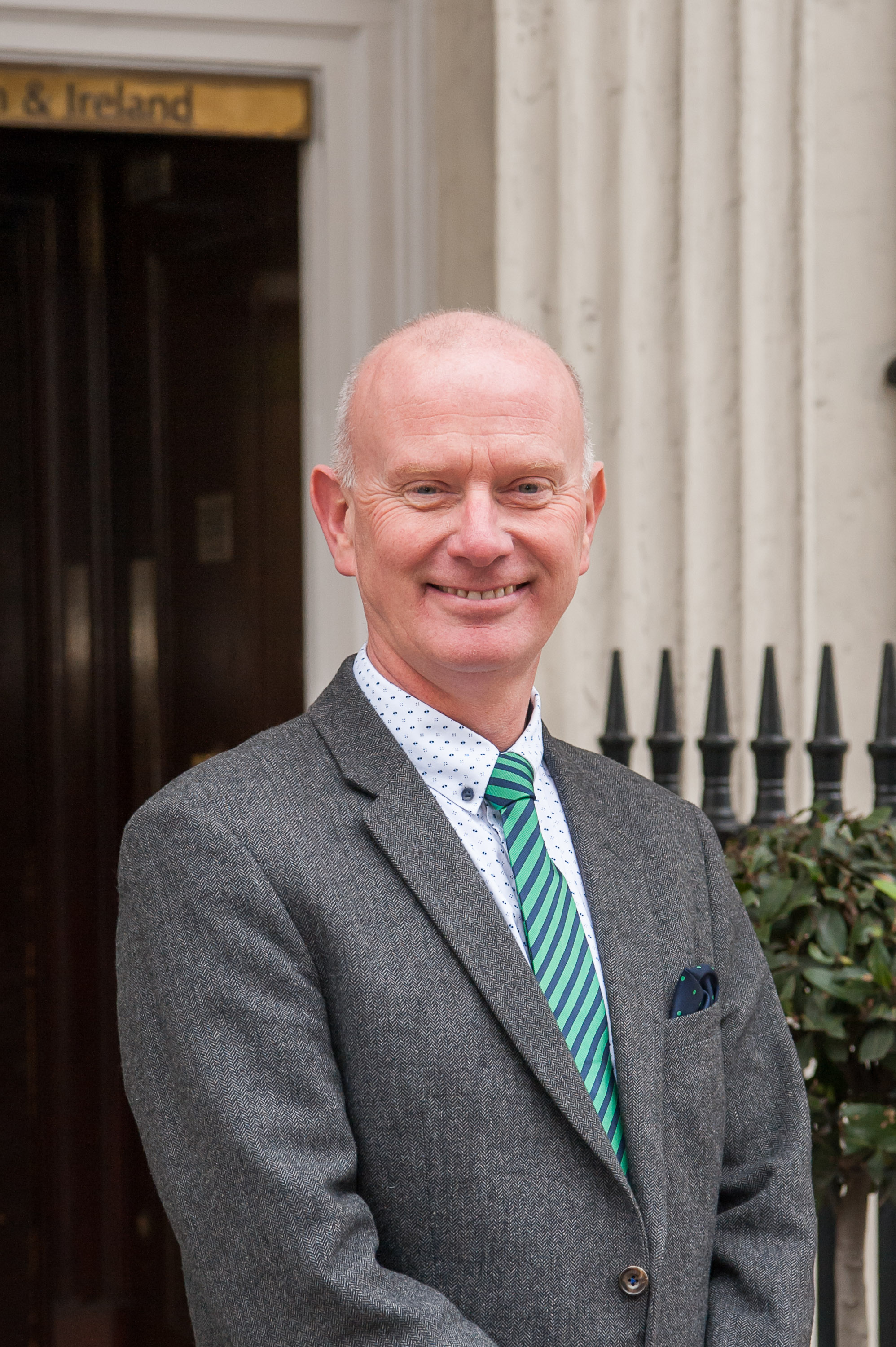
It gives me great pleasure to write this citation for Kevin who is not only a great colleague but has been a life-long friend. I have known Kevin since his first fledging footsteps as a young surgical intern in 1986. Indeed, both Kevin and I soldiered in the trenches on the same surgical rotation on a 1: 2 on call that required at least a 100 hours every second week (before the fight fatigue campaign!). Kevin married during his intern year (hard to understand where he found the time or the energy) and was the first of my contemporaries to do so. A native of Kildare, Kevin works in Letterkenny University Hospital and is an adopted son of Donegal. He calls the town of Ramelton home. In 2017, he was the driving force to awarding an Honorary Fellowship of the College of Anaesthesiologists of Ireland to Ramelton’s most famous son. Professor William Campbell, a native of Ramelton, now living in Boston USA, was awarded a Nobel prize in Physiology/ Medicine in 2016 for his research in infections caused by roundworm parasites. His work has changed the lives of millions of patients.
Few can resist the charm offensive that is Kevin Bailey. This asset had made him not only an able communicator but best placed to articulate the voices of the rank and file members of the Irish Standing Committee (ISC). During his term as convenor, he not only raised the profile of the Association of Anaesthetists in Ireland but refocused the ISC to make it more relevant to the ordinary members. Kevin has served as a member of the ISC since 2006 and as Convenor from 2016-2018. In addition, he also sat on the Safety Committee, Independent Practice Committee and Council of the Association of Anaesthetists. Kevin’s most significant achievements as convenor include.
Model of care for Anaesthesiology Kevin and the ISC contributed extensively to this document from the National Clinical programme for anaesthesia. This document highlights the minimum requirement for the safe provision of unscheduled care in hospitals that provide anaesthesia, critical care and co-located obstetrics (that is 2 consultants and 2 trainees on call). This 2 + 2 model will be the foundation stone for the provision of safe anaesthesia in Ireland for the next decade and will make ultimately the patient journey safer.
Transport survey Kevin was one of the driving forces of a survey carried out by the ISC concerning interhospital transport of the critically ill. This survey identified that the majority of those anaesthesiologists involved in critical care transfers were inexperienced and in most cases had received no formal education in transfer of the critically ill. This education gap is now being addressed by the College of Anaesthesiology of Ireland and the Mobile Intensive Care Ambulance Service of Ireland.
In 2016, Kevin was elected as the Irish representative onto the Council of the European Society of Anaesthesiology. He plays an important role as a bridge between the Anaesthesiology community in Europe and Ireland.Kevin continues to be an able ambassador for both the Association of Anaesthetists and Irish Anaesthesiology at home, in the UK and further afield in Europe. We are lucky to call him one of our own.
Dr Brian Kinirons
President,
College of Anaesthesiologists of Ireland
Dr Mark Heining - Association Award
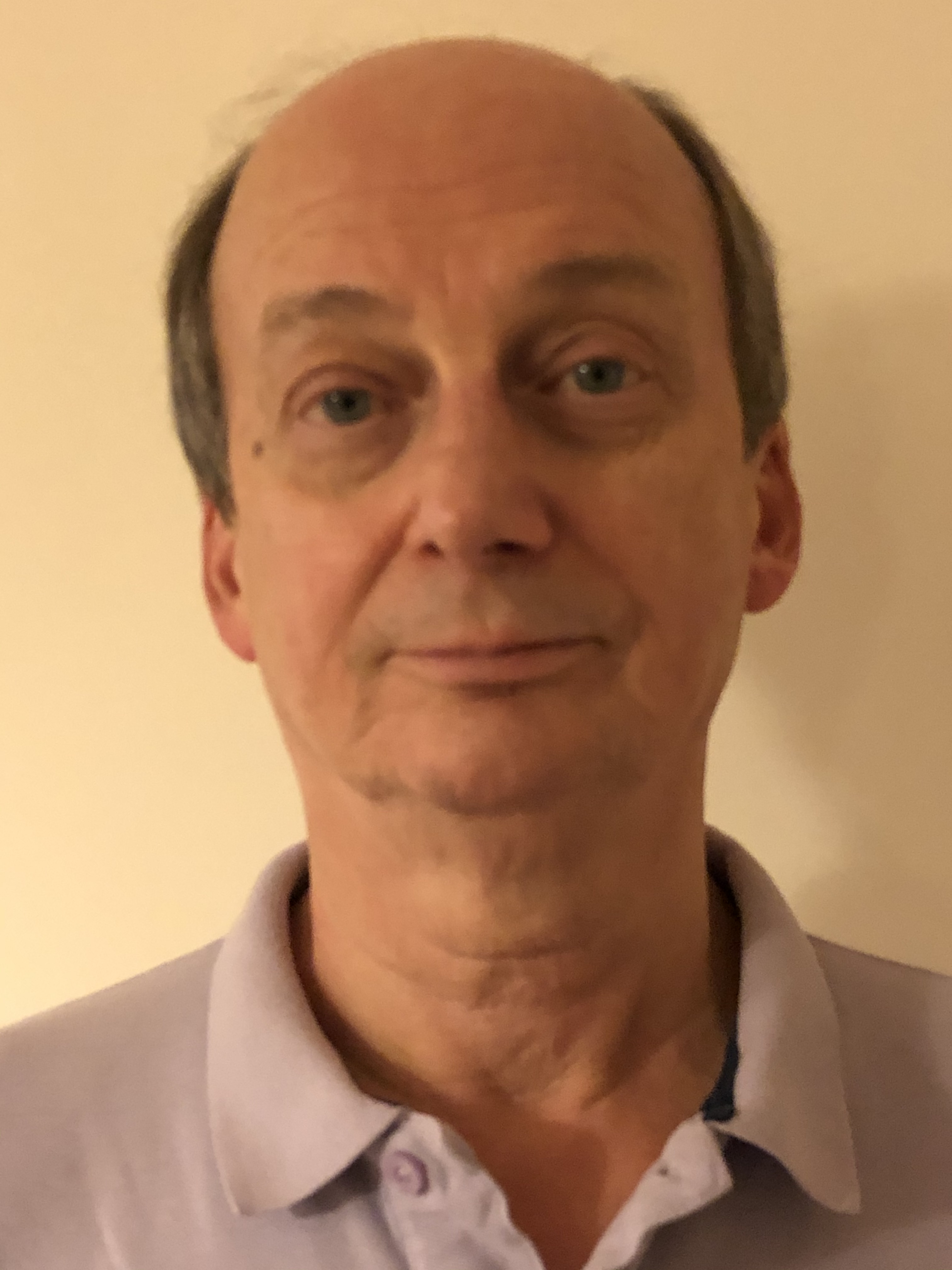
Dr Mark Heining has made a major contribution to professional medical education throughout his career and more latterly to public education about anaesthesia.
Mark trained in anaesthesia at St Thomas’ Hospital, London, and obtained the FRCA in 1980. In 1987 he was appointed as a Consultant Anaesthetist to Nottingham University Hospital where he enjoyed a very successful career until 2012.
For 12 years he was as an examiner for the Royal College of Anaesthetists from 1996–2008 and during that time travelled to distant shores as an external examiner in Bangladesh, Hong Kong and Singapore, and closer to home, in Dublin.
He undertook important roles in undergraduate education within Nottingham. He was Associate Clinical Sub Dean, Nottingham University Medical School, 1999-2012 and Director of Undergraduate Education, Nottingham University Hospital, 2006-2012.
Also, Mark has been enthusiastically involved in those aspects of medical education concerning teaching the teachers and training in assessment and appraisal. He was a regular facilitator in the Anaesthetists as Educators workshops at the Royal College of Anaesthetists where his humour and common sense were greatly appreciated.
Finally, and importantly from an Association viewpoint, since 2013 Mark has been a volunteer in the Heritage Centre at the Association of Anaesthetists, Portland Place. These activities have included giving talks on the history of anaesthesia to visiting groups (ranging from school children to retired professionals), guiding tours of the museum, conducting oral history interviews and manning the Heritage Centre display stand at conferences such as the Associations’ Trainee Conference, Annual Congress, Winter Scientific Meeting as well as at the History of Anaesthesia Society. He continues in this role to the present time and his contribution is greatly valued.
Dr Doug Justins
Dr Satinder Dalay - Association Award

I am incredibly honoured to be writing a citation on behalf of my dear colleague and friend Dr Satinder Dalay in recognition for her contributions to the Association of Anaesthetists. Satty was an elected member of the Group of Anaesthetists in Training (GAT) Committee for 4 years and her hard work makes her is a very deserving recipient of the Association Award.
Satty graduated from the University of Birmingham in 2009 and started her foundation training in the West Midlands deanery. She completed her anaesthetic training in the Birmingham School of Anaesthesia, before staying true to her West Midlands roots and taking up a consultant anaesthetist post at Worcestershire Acute Hospitals NHS Trust in January 2019.
Satty joined the GAT in 2015 and during her 4-year tenure, Satty certainly lived up to her reputation as a "doer" and managed to achieve a lot for the committee and for her personal development. She spent most of her term as our trainee lead on the Anaesthesia News Editorial Committee and she went on to successfully edit our trainee issues in June 2017, June 2018 and June 2019. These have been well received by trainees across the country and have helped to promote the work of our committee. Satty has also been involved in both the “Malignant Hyperthemia Guidelines” and “Perioperative Management of Patients with Sickle Cell Disease” working parties. Other roles include being our GAT co-opt on the RCoA Quality Working Group between 2016 – 2019.
One of her biggest achievements was co-editing and publishing the 12th edition of the GAT Handbook in June 2016. A lot of blood, sweat and tears went into this and the high quality of the publication is something she should be incredibly proud of. Even though she has stepped down from the Trainee Committee, her ties with our committee remains strong. Satty started to co-edit the 13th edition of the Trainee Committee Handbook prior to stepping down and has very kindly agreed to undertake this role for continuity. She continues to put in a lot of hard work towards this, with publication due in 2020. Additionally, Satty remains an active member of the Association through her successful appointment as Assistant Editor for Anaesthesia Reports since May 2019.
For me personally, Satty has been a great friend and confidante - her sound opinions and sensible advice carries so much weighting. She has an ability to maturely and intelligently analyse a situation and give a measured response and this made her a great asset to our committee. Satty has an unrivalled skill for weighing up pros and cons of any decision effectively and efficiently and moving discussions forward. When she chaired our committee meetings, she ensured every elected member had a chance to express their views before summarising and drawing conclusions. I have learnt so much from the example she has set. Satty’s modesty means I do not think she realises how many great qualities she possesses. She is honest, trust-worthy and incredibly kind-hearted. I particularly miss her wit and sense of humour during Trainee Committee meetings – she always managed to make us smile!
Satty has always said that if she was not a doctor, she would be a Match of the Day football pundit! Although I have no doubts in her ability to do this job well, we need her to stay in anaesthesia as she is a great asset to our profession. A huge congratulations Satty on the Association Award – you are a worthy and deserving of this honour and I am proud to call you my friend!
Dr Sally El-Ghazali
Chair, Trainee Committee
Association of Anaesthetists
Dr Smita Oswal - Association Award
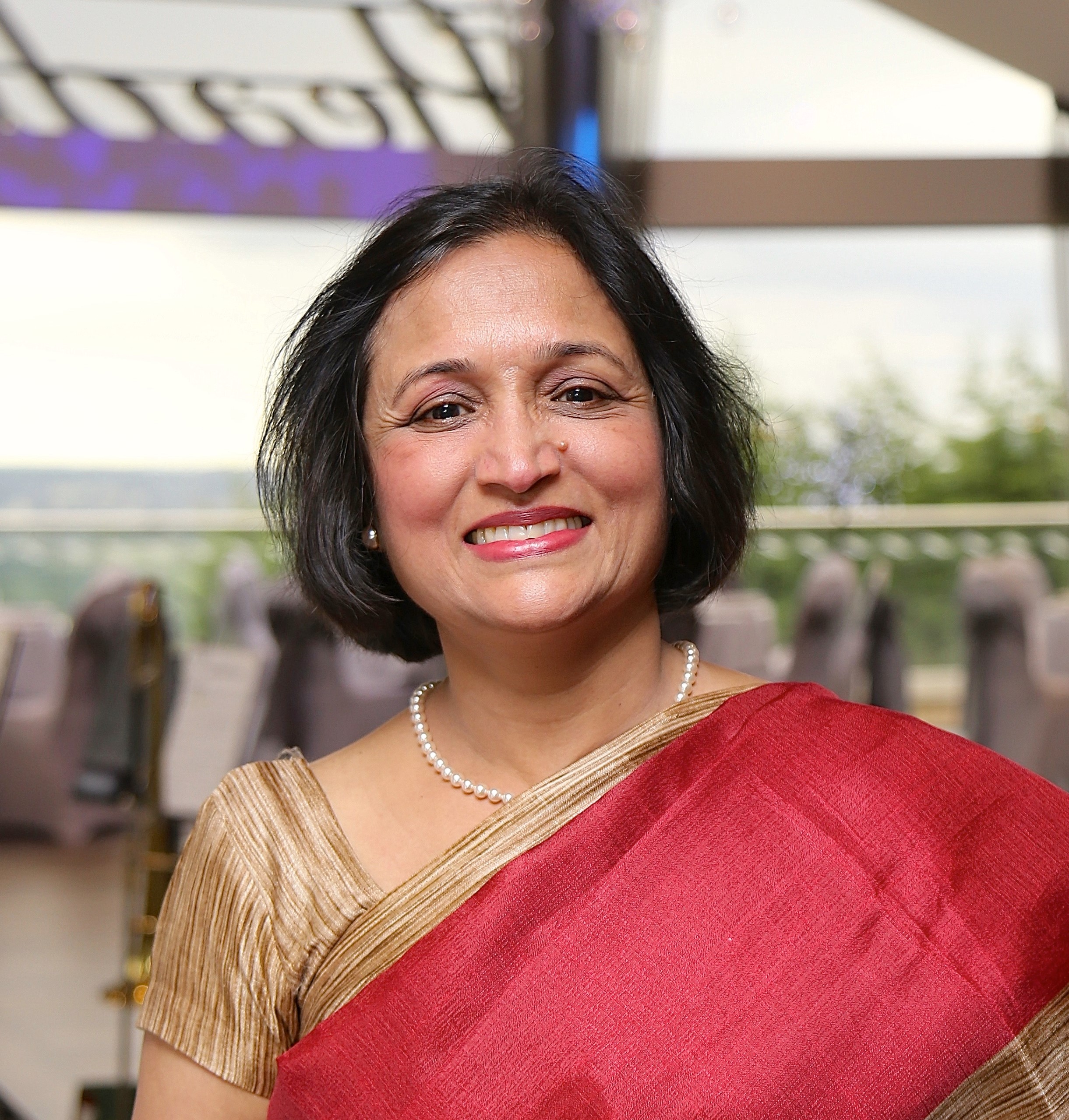
It is my great pleasure and a privilege to provide a citation for my dear friend Dr Smita Oswal on the occasion of receiving the Association of Anaesthetists Award. I have known Smita for over two decades as a member of the SAS Committee which I chaired. Smita’s continued contributions to the Association, the SAS Committee, the speciality of anaesthesia and anaesthetists in the UK are immense and especially her continued efforts to raise the profile of SAS doctors are commendable.
Smita is kind, pleasant and humble but dynamic and innovative at work. She keeps herself ever current with developments. Smita is hard working, passionate about anaesthesia, proactive and eager to take part in all kinds of activities. Her contributions are extremely comprehensive.
A noteworthy contribution is in the professional development of anaesthetists. She organises very successful seminars at the Association which are often oversubscribed. She runs workshops regularly on airway skills and Total intravenous anaesthesia (TIVA). She is one of the first anaesthetists who took an interest in TIVA when it was introduced and has been training other anaesthetists in the technique since.
She has been taking an active interest in medical education throughout her career. She developed and runs Foundation Year doctors’ airway skills courses twice a year. She is an OSCE examiner at the local medical school and is on the TIVA teaching faculty in the department. She has assisted in Leeds medical school interviews for some years, marking Universities and Colleges Admissions Service (UCAS) forms and has been on a Multiple Mini Interview (MMI) panel.
She has been the editor of the Bradford Anaesthetic department newsletter since 2009 which is very popular with all staff in the operating department. Smita has chaired many successful association seminars on paediatric anaesthesia, respiratory disease and anaesthesia and held the first SAS webinar. She spoke at the Association’s Annual Congress on SAS matters. She has also judged poster competitions.
Smita won an SAS audit and research prize twice. She sat on working parties of the Association for establishing guidelines on the Good Anaesthetist, Return to work and Accidental awareness during general anaesthesia. She has been a member of the Association’s Education Committee, Safety Committee and Evelyn Baker Award committee. She contributed several articles to Anaesthesia News. She contributed a chapter on audit to the SAS handbook. She has designed and analysed a membership survey for the Association on SAS doctors as teachers.
Her husband is a consultant radiologist and they have two sons, the eldest is training to be a paediatrician and the younger studying economics at Oxford. Smita is now rekindling her interest in music, playing harmonium and keyboard and she has resumed singing. Her amazing diversity of skills is mirrored in her loving family life.
She has contributed to the Association in every possible way and especially played a major role in raising the profile of SAS doctors. Smita richly deserves this award for her long-standing and dedicated service to the speciality of anaesthesia.
Ramana Alladi
Honorary member, Association of Anaesthetists
Past member of the Council of Association of Anaesthetists
Tom Wojcikiewicz - Association Award
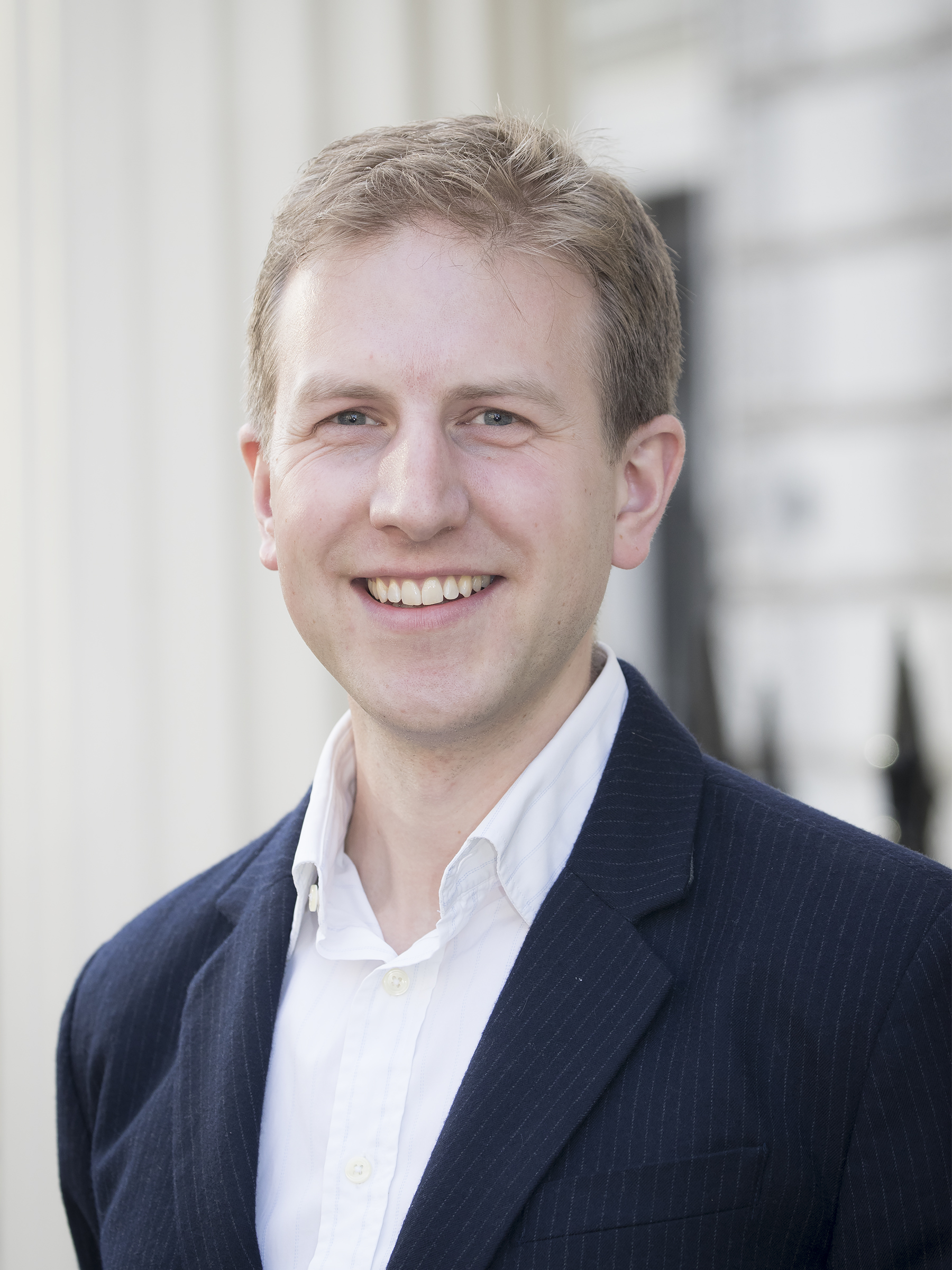
I have had the pleasure of knowing Dr Tom Wojcikiewicz since 2017, when he was first elected onto the Group of Anaesthetists in Training Committee. He has become a friend as well as a colleague and therefore I am honoured to be writing this citation in recognition of his contributions to the Association of Anaesthetists and the Trainee Committee.
Tom was an anaesthetic trainee in HEE Kent Surrey Sussex and completed his training in July 2019. Although prior to starting his anaesthetic training, Tom completed three years as a trainee in emergency medicine before seeing the light and joining the world of anaesthesia! He has been appointed as a substantive consultant post in Royal Surrey NHS Foundation Trust as of December 2019 with a subspecialty interest in regional anaesthesia and anaesthesia for major surgery.
Tom has always been passionate about representing trainees throughout his career. This includes taking on roles such as Trainee Network Lead and being involved with the RCOA Anaesthetists in Training Representative Group. Tom has also been dedicated promoting anaesthesia as a career path and has helped organise the annual KSS Career Development day, which is now in its 10th year.
Since being elected on the Group of Anaesthetists in Training Committee in 2017, Tom has continually proven that he is dedicated and enthusiastic when representing the views of anaesthetic trainees at a national level. He helped highlight pay issues experienced by trainees and wrote a well cited article for Anaesthesia News entitled ‘Knowing Your Payslip’. This helped educate and empower trainees who were looking for guidance and the feedback around Tom’s work proved this was highly useful.
Tom was also instrumental with his role as lead for seminars. He helped run successful Consultant Interview and Management and Leadership seminars in London and he was highly influential in establishing the courses outside of London for the first time. The feedback from the courses he helped run in Manchester and Edinburgh was impressive and the success has meant these are now regularly run seminars. During his tenure, he was also the trainee representative for the Professional Standards Committee and the Heritage Committee. Tom managed his busy committee work with an equally busy bariatric/upper GI Fellowship at Imperial College and had an active role in the Society for Obesity and Bariatric Anaesthesia committee. Despite stepping down from the Trainee Committee in 2019, Tom remains an active member of the Association. He is still a member of the Emergency Abdominal Surgery working group – he clearly cannot let go to our Association family and we are happy that he is still involved!
I am very lucky to have worked closely with Tom – I have made a great friend and I have learnt a lot from him. His ability to maturely analyse a situation and communicate his thoughts, concerns and ideas so clearly and in a measured way was a joy to watch. Tom is hard-working, caring and passionate and these are some of the qualities that endear him to those around him. His reputation precedes him as I have only heard effusive praise and kind words when describing Tom. The fact that he is well-liked wherever he goes and by whomever he meets is the biggest testament to his character. He is very deserving of the Association of Anaesthetists award for his contributions to our Trainee Committee.
Huge congratulations Woj - I am incredibly proud of you and wish you all the best for your bright future!
Dr Sally El-Ghazali
Chair, Trainee Committee
Association of Anaesthetists
Dr Jannicke Mellin-Olsen - Honorary Membership

It is a pleasure to write this citation for Dr Jannicke Mellin-Olsen in relation to the award of her Honorary Membership of the Association of Anaesthetists. This award is made to ‘eminent anaesthetists of great distinction’. Jannicke certainly fulfils that requirement, and much more. She joins a group of distinguished clinicians and others who have greatly benefited the work of the Association, its members and their patients. It is a great honour for us to have Jannicke accept this award. Her links to the Association - present informally for so much of her career – are now formalised, and deservedly so.
Jannicke has made huge contributions to anaesthesia and patient care in her native Norway, in Europe, and in the rest of the world. Among many other areas, she has been particularly influential in promoting international collaboration on patient safety. The list of other national societies that have recognised her contribution is evidence of the high esteem in which she is held.
Aligning with the interests of the Association on patient safety, education and welfare, her work in Europe (and wider) has been of direct benefit to colleagues in Great Britain and Ireland. We have worked with her during her time on the European Board of Anaesthesiology (where she held several high offices, including President), the European Society of Anesthesiology (where she was Honorary Secretary) and now as the President of the World Federation of Societies of Anaesthesiologists (WFSA).
In 2010, while President of the EBA, she coordinated the production and subsequent signing of the Helsinki Declaration on Patient Safety in Anaesthesiology which has since been approved and signed by many countries. She served with distinction on the WFSA Education Committee before becoming its Chair in 2008, then Deputy Secretary of the WFSA in 2012, and then President-Elect in 2016. She has worked with the International Committee of the Red Cross in Geneva to improve their anaesthesia protocols and has attended a series of World Health Assemblies on behalf of the WFSA and our speciality in Geneva.
She has always held deep concerns about those who do not have immediate access to urgent medical care. She has worked with MedAire Europe to promote better medical services to remote areas, with the Egyptian Health Ministry to develop air ambulance services, and was Medical Director of the Norwegian Air Ambulance service for several years.
She served with distinction with the United Nations peacekeeping forces and holds a Nobel Peace Prize Laureate’s Medal, the Medal of Honour of the Nordic Blue Berets and the Norwegian UN Veterans Medal of Honour.
Her enthusiasm and leadership has been inspirational to all of those who have worked with her over the years in all these committees and organisations. She has an unshakeable sense of fair play and truly believes in equality of opportunity as a given right for all people. She is a great champion for gender-equality and for the rights of all patients throughout the world to receive an equal high standard of care.
Those who have worked with her, or heard her speak, know of Jannicke’s sparkle and energy which are derived from her passion for patient care and for her colleagues no matter where they work or their needs. Her positivity and ‘can do’ attitude is obvious at any meeting she attends. While her work on patient safety is well-known; she is also the first to acknowledge there is much more to do and she continues to inspire and lead.
We are honoured to call Jannicke our colleague, our collaborator and our friend. We are delighted she has received this award.
Mike Nathanson Honorary Secretary Association of Anaesthetists
David Wilkinson Past-President WFSA
Mrs Patricia Willis - Honorary Membership
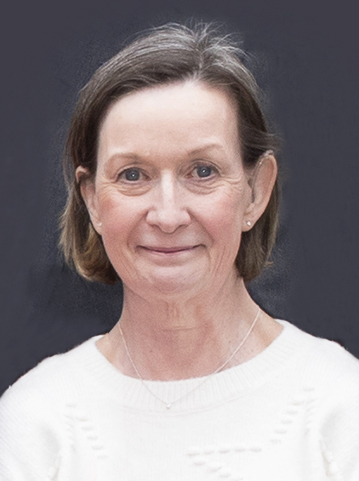
Patricia joined the Association of Anaesthetists on 15 May 2000 as Archivist, but with additional responsibility for the museum and library. Becoming immediately and fondly known as ‘Trish’ she took to the role like a duck to water. Within eighteen months she produced a blueprint for a New Heritage Service for the Association. Her style of leadership was embracing – tactfully seeking the support of the Archives, Library and Museum Committee and advice of the History of Anaesthesia Society.
When Trish joined the Association, it was housed at 9 Bedford Square, where there was relatively small space for the Museum (Charles King collection). The Association moved to 21 Portland Place in 2002 and Trish oversaw the transfer of museum exhibits, library books and archives. Part of the basement was redesigned to a modern Heritage Centre incorporating both a permanent museum exhibition and a temporary exhibition area, plus archives and library research sections. This was ready for the public by the end of 2003.
From 2004 Trish organised a temporary exhibition at the Association’s Winter Scientific Meeting, continued annually thereafter – and each time different. She also organised travelling exhibitions at the regional Annual Congresses. Always receptive to suggestions of acquisitions, on her watch the Library was built up to become one of the best collections of early British anaesthetic textbooks and pamphlets in the world. In 2006 she was promoted to Heritage Manager. As it became difficult for the staff to cope with the increasing number of visitors, in July 2007 an advertisement was placed in Anaesthesia News for retired anaesthetists to volunteer as guides in the Museum and on London walking tours, as well as helping to improve the database of the collections. This proved to be a success and Trish became a very popular mentor of the many volunteers. By January 2009, through her careful application, the Heritage Centre became fully accredited with the Museums Libraries and Archives (MLA) Council UK. From 2018 a travelling exhibition was extended to the annual scientific meetings of the History of Anaesthesia Society, which elected Trish an Honorary Member in 2019.
Trish often brought her husband Jim to events and is visibly a family lady. She retired on 15 May 2019 after nineteen years of service to the Association. Her popularity was obvious from the huge turnout for her retirement party held at 21 Portland Place on 2 May 2019. She thoroughly deserves the Honorary Membership Award, which no doubt will be given pride of place for viewing by her lovely family.
Dr Alistair McKenzie Honorary Archivist
President, History of Anaesthesia Society
Matt Wilson - Featherstone Professorship of the Association of Anaesthetists
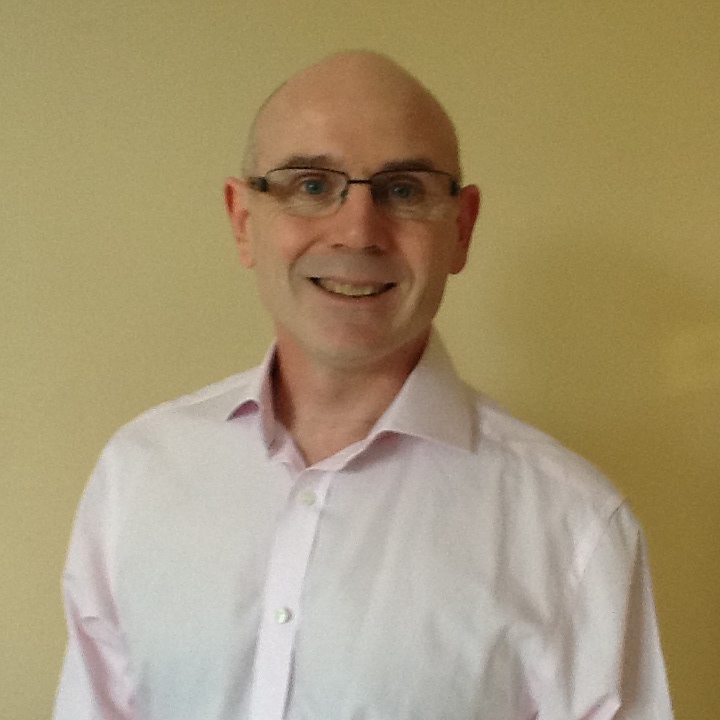
Matt Wilson was awarded a scholarship to Balliol College Oxford, obtaining a basic sciences degree in physiology before graduating in medicine in 1991. He trained in acute medicine before entering anaesthetic training in the West Midlands where he developed an interest in maternity care. Appointed to a lecturer post in anaesthesia, his MD thesis in 2005 described he results of ambulatory epidural analgesia for childbirth, published as the highly-cited COMET trial, a novel concept which substantially improved obstetric anaesthetic practice and maternal care worldwide.
In 2011, from a full-time NHS consultant post, Professor Wilson was the inaugural award winner of the National Institute of Health Research Clinician Scientist Fellowship in Anaesthesia. This allowed him to establish his research programme at the School of Health and Related Research (ScHARR) at Sheffield University, where he has raised more than £10M in research grants for his perioperative research group, leading and collaborating in a succession of important, high-impact, patient-focused multicentre trials in perioperative medicine, maternal reproductive health and obstetric anaesthesia, published in the Lancet, PLoS Medicine, BMJ, Anesthesiology, the BJA, and Anaesthesia. His BUMPES trial of maternal position during labour was awarded the British Medical Journal’s “Research paper of the year” for 2018. His RESPITE study published in the Lancet showed that using remifentanil to alleviate the pain of childbirth reduced by half the number of women requesting supplemental epidural analgesia when compared with pethidine – a remarkable and important outcome.
In addition to his research work, Professor Wilson is the Grants Officer to the National Institute of Academic Anaesthesia, a member of the NIAA Board and Research Committee, an elected member of the Executive Committee of the Obstetric Anesthetists’ Association, member of the Board of the NIAA’s perioperative medicine clinical trials network, and scientific advisor to the International Collaboration to Harmonise Outcomes for Pre-eclampsia, (the iHOPe) study, funded by the NIHR.
Professor Wilson’s highly effective leadership, exceptional contributions to clinical research and NHS service delivery in obstetric anaesthesia were recognized in 2016 through the award of the highly competitive Macintosh Professorship by the Royal College of Anaesthetists.
Professor Wilson is an outstanding anaesthetist who provides patient-focused care, including a full commitment to night and weekend duties which are often onerous. He is recognised as an exceptional teacher and role model by his peers, by his doctoral research fellows, academic clinical fellows, and postgraduate students. He is, in short, an exemplar for our speciality and well-deserving of the honour which the Association has chosen to bestow upon him.
Professor Julian Bion and Professor Fang Gao
Samantha Shinde - John Snow Award
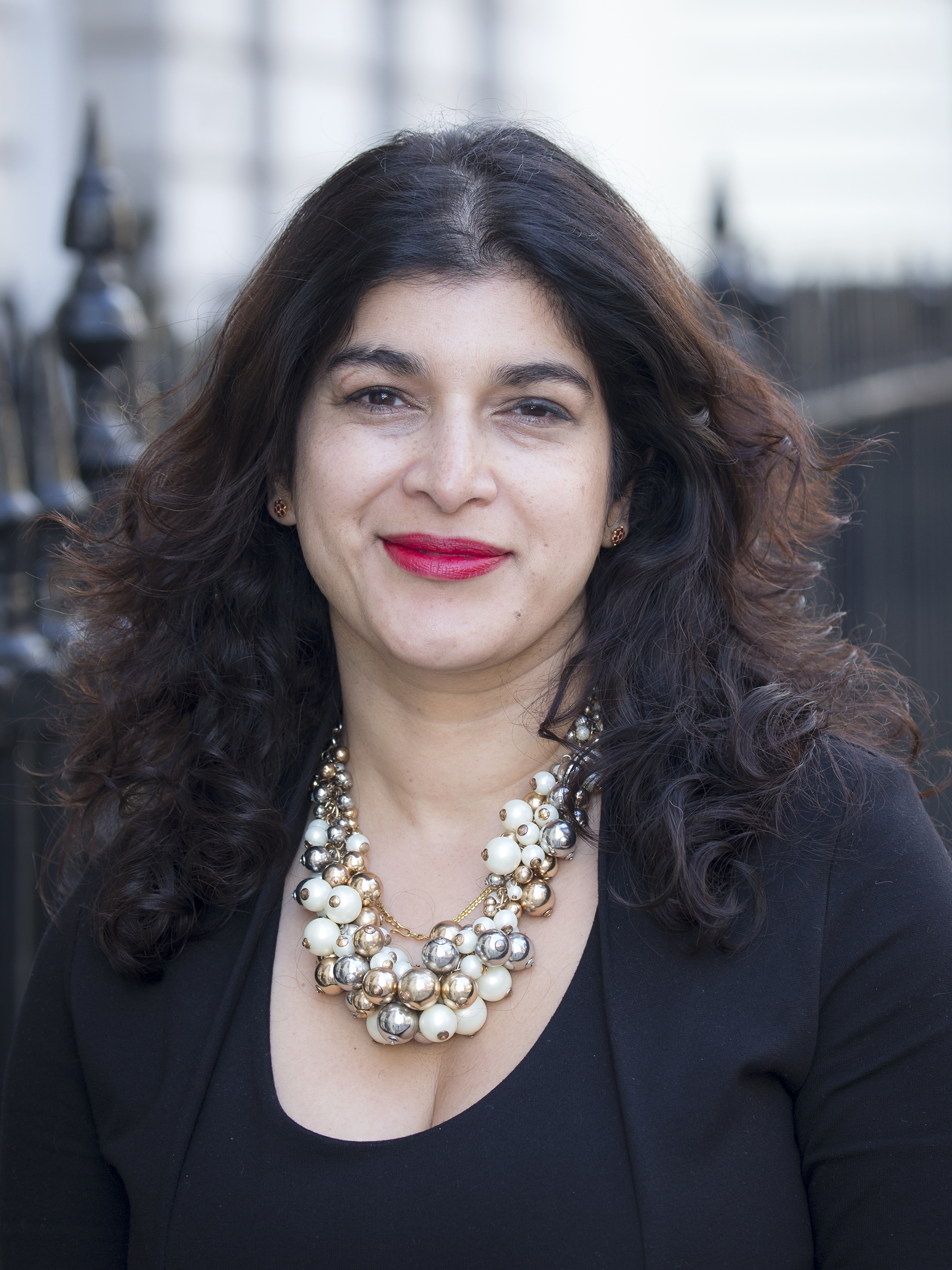
I first met Sam in 1992 when I was a fledgling senior registrar at Charing Cross Hospital and she was a fledgling fledgling, doing her second SHO post. Our paths didn’t cross again for some time, during which she had helped transform the Association of Anaesthetists GAT Committee as member and Hon. Secretary (1994-97), going on to join the Association Board/Council in 2010, which is where we met up again. Sam subsequently served as Hon. Secretary and Education Chair, and then Vice-President, the latter role ending in Sept 2019.
Sam is fiercely defensive of the Association’s principles, in particular defending and supporting trainees, SAS doctors and anyone in difficulty. A true people’s person, her modus operandi is irresistible: a hug, a joke and a cup of tea, followed by another hug just in case the first has been forgotten (never!).
She and I have worked together on many Association projects, mostly around trainees, education, wellbeing and the environment, and our Friday morning breakfast meetings, before the official Association business started, rapidly became a welcome routine ritual for sharing pictures of our families and solving the problems of the day (if not the world).
I’ve never seen Sam throw herself half-heartedly into anything, whether cycling across the country to raise money for charity, baking enough cakes to feed an army, or taking on some of the less glamorous Association committees and transforming them for the better. Her latest challenge is to tackle environmental issues relating to anaesthesia and she has elevated this to a major collaborative effort, with the Association leading the field (watch this space!).
She has become one of the huge influencers in the Association, long before influencers became trendy, and her influence will continue to be felt long after she’s left the Board.
The Association has been very lucky to have gained so much from her continued involvement, and the John Snow Silver Medal is a fitting acknowledgement of her many contributions.
Dr Steve Yentis,
Consultant Anaesthetist
John Rampton - Evelyn Baker Award

Dr. “John” Rampton finally fully retires from the William Harvey Hospital dept. of Anaesthesia, East Kent Hospitals NHS trust (EKHUFT) after over 30 years of continuous service to this hospital and the people of East Kent. He has been the backbone of this department during this time and truly meets the criteria for the Evelyn Baker medal. An outstanding doctor, anaesthetist and clinical manager he has consistently demonstrated a commitment to the general anaesthetic, obstetric and critical care services over and beyond that required by a such a significant margin that the members of this department and current clinical leaders cannot allow this unassuming individual to escape without some national recognition of his contributions.
His first loyalty has always been to this hospital and by extension the trust, and the support of the patients and staff within. He has consistently has demonstrated that quality, which many anaesthetists lack, which is seeing the bigger clinical and operational picture outside of the theatre suite and other immediate spheres of our professional obligations, such that total patient care is prioritised over and above all other considerations. This has led to occasional differences of opinion and uncomfortable discussions held with senior medical and non-medical management when they have been asked to justify some of their decision making.
This diligence has been discharged through a variety of positions from support at grass roots level to many higher roles held in this organisation over the years such as his 3 stints as departmental clinical lead, the last during a time of considerable uncertainty and service reconfiguration, and at a time when he was under no obligation to step into this role again. He was also the trust lead for anaesthesia overseeing the merger of 3 separate anaesthetic departments in our 3 acute hospitals within EKHUFT and latterly an EKHUFT staff governor. Successive colleagues have always been grateful for his generosity with unobtrusive advice and in enabling others to develop their leadership and management skills when they have taken on more responsibilities in management or setting up/reconfiguring clinical services. He has also been unstinting in his support of colleagues when they have encountered difficulties and is well known for his fairness and wisdom and skills as a mediator.
His technical and clinical expertise in obstetric anaesthesia are well recognised throughout the hospital and the other trust sites and he has for many years been the go to opinion for those clinically challenging cases which keep colleagues awake at night. He has been a constant source of sound advice willingly given in both the emergency and elective situation and was instrumental in the setting up of obstetric anaesthetic high risk antenatal clinics. These ran single handed for a long period and in his own time, without much in the way of initial administrative support, and was delivered with exceptional professionalism and dedication undoubtedly reducing the morbidity burden experienced by our patients. An outstanding communicator with patients, he has rarely, if ever been the subject of patient complaint and has managed potential conflict situations coolly and with the desired outcome usually achieved. As an amateur photographer many a new-born portrait bears his stamp and this has become one of his trademarks on the delivery suite.
He is much loved and respected by the midwifery staff and colleagues from the women’s health directorate where he has devoted so much energy and time to midwifery education in particular, but also to on-going obstetric governance and patient education whilst remaining a patient and knowledgeable trainer of successive cohorts of anaesthetists cutting their obstetric teeth or senior colleagues wishing to refresh their obstetric competencies.
His outstanding clinical competence, sickeningly, does not end here and he has been a superb generalist of the old school capable of operating in many subspecialty fields at the extremes of patient age.
He ran a satellite ICU in the old Buckland hospital, Dover as well as contributing to the main ICU staffing at the William Harvey hospital at the start of his career with a handful of like-minded colleagues to a very high standard before the days of the specialist Intensivist cover and remained a participant of the acute general on call anaesthetic rota at the William Harvey right up until retirement from full time practice in his 7th decade without showing any sign of finding this at all unusual or challenging with the energy level of a junior consultant. Successive generations of anaesthetic trainees attest to his unflappable demeanour and resilience whilst on call at what is an exceptional busy secondary care acute hospital that places a high demand upon its anaesthetic and intensive care teams.
There is little he appears unable to do and is a rota writer’s ideal “utility” anaesthetist. Finally we managed at one point to get him to confess that he is not that comfortable doing inter scalene blocks but otherwise the breadth of his clinical knowledge, ability to learn new skills and ways of working and his excellent relationships with surgeons of various specialisms is as yet unparalleled in our experience. After retirement from full time working he has continued practicing part time for 2 years as part of a phased retirement to full cessation of anaesthetic practice which was clearly the correct thing for him to do. He can retire knowing that he is still at the very top of his game and with the very best wishes from his colleagues. He will be sorely missed and may be considered almost irreplaceable. That we can fill the gap he leaves is testament to the work he has put in over the years in terms of recruitment and retention of staff.
We wish him and his wife and family the very best in his deserved retirement and success in those new challenges that he has set himself with his charitable endeavours and community projects. This citation is made with the full support of the surgical care group directorate and trust medical directorate long with longstanding colleagues from many disciplines.
Dr. Marcus Fletcher
Lead clinician - dept. of Anaesthesia William Harvey Hospital - EKHUFT
Dr. Vanessa Purday
Clinical director – Surgical directorate – EKHUFT
Dr. Jonathan Purday
Deputy Medical director - EKHUFT
Dr Kathryn Bell - Evelyn Baker Award

Dr Kathryn Rowan Bell was born and grew up in the North East of England. She attended medical school at Newcastle University, graduating in 1988. After her initial medical training and successfully completing her MRCP, Kathryn undertook anaesthetic training in the Northern Deanery. She was awarded her certificate of completion of specialist training in 1998 and was appointed as a consultant anaesthetist at Newcastle upon Tyne Hospitals, initially working across site between Newcastle General Hospital and the Royal Victoria Infirmary (RVI) until 2010 when neurosciences moved to the RVI.
Kathryn’s clinical expertise lies in ophthalmic and neuro-anaesthesia. Over the last 25 years, she has developed an understanding of the technical aspects and subtle complexities of neurosurgery that is unrivalled. Her anaesthetic practice ranges from paediatrics to octogenarians: from intracranial tumour resection to neurovascular disease and trauma, from functional neurosurgery to interventional neuroradiology. In particular, she has extensive expertise in anaesthesia for acoustic neuroma surgery. She has developed the service, working tirelessly to improve patient care through a series of “marginal gains”. She is exceptional at bringing surgeons of different disciplines together, establishing common ground, often offering a new perspective and facilitating discussions to allow case planning. Kathryn has been the lead clinician for ophthalmic anaesthesia for 10 years, providing an outstanding service in both general and local anaesthesia. She is now the sole provider of sub-tenon blocks. For years, she provided ad hoc but high quality pre-assessment for eye patients taking hours of her non-clinical time to read notes and see patients. She campaigned successfully for their proper incorporation into the main pre-assessment services. Despite this, she remains the single point of contact for advice related to ophthalmic anaesthesia.
As a clinician, Kathryn’s primary focus is patient care and it is the strongest driver for her. She demonstrates compassion through her actions and deeds. A day in theatre with Kathryn is a master class in list management. She is committed to delivering the best possible care (fuelled by Ringtons tea) and often goes beyond the call of duty for her patients and colleagues. Kathryn supports surgical trainees to operate independently, but also ensures that they are appropriately supervised. Early in her consultant career she identified a number of incidents where there was a risk to patient safety. As the whistleblower, there was the potential for considerable personal cost but out of necessity came bravery.
The exceptional skills and contribution that set Kathryn apart relate to recruiting, training and supporting colleagues. Kathryn’s own training and practice has been entrenched in Newcastle and she has duly reciprocated. Kathryn has been a lead co-ordinator for undergraduate students. She has enthused students at the Newcastle University Society for Anaesthesia and Critical Care fostering the next generation’s interests in anaesthesia. Early on in undergraduate training she supports clinical experience placements and in the latter stages she offers student selected components and elective placements.
For doctors in training, Kathryn has provided clinical and educational supervision and has been a regular contributor to FRCA exam preparation courses. Clinically, she has provided them with the blueprint for anaesthesia for craniotomy. In the Northern School of Anaesthesia, Kathryn established herself as the training programme director (TPD) for trainees in difficulty and when required became acting head of school. She has been quick to recognise that trainees experience competing stressors from, but not limited to, health problems, the needs of dependents, relationship breakdown, cultural differences in the NHS for those from abroad, exam failure and clinical demands. She has actively managed those trainees with their educational and clinical supervisors through mature dialogue, keeping them at the centre of the solution rather than adopting the role of a paternalistic problem solver. On occasion, Kathryn has helped doctors in training come to the difficult realisation that they have made the wrong career choice, but with support, has also helped them see that it is far from the end of the road and much more like a bright new beginning.
Since she became TPD, there has been more widespread acceptance that doctors in training need additional support and she has widened her portfolio to support trainees with differing needs and is a strong proponent of less than full time training. A trainee with differing needs may be far from failure but their progression through training is complicated. However, with Kathryn’s depth of understanding of the system and sense of purpose, she has helped them overcome or break down barriers. She is nothing short of a pioneer, this has been recognised through invitations to speak and write commentaries for the Association of Anaesthesia of Great Britain and Ireland.
Kathryn is also a trained appraiser and, in conjunction with Dr Nancy Redfern, has brought mentoring to the fore. As a mentor she is one of the few people who can offer impartial guidance even when she has a stake in the outcome. Kathryn has supported her consultant and non-medical colleagues within the trust and the wider region through every imaginable difficulty. She does this discretely, with absolute confidentiality, seeking no recognition for herself: compassion through action. We only know of it from those who have chosen to share their stories with us. One colleague regretted that as a consultant they no longer got to spend any time with her in theatre. Another described her as “emanating calm when things are turbulent, delivering wisdom and instilling confidence so that you can handle challenges.” In essence, Kathryn sees that the practice of medicine is fundamentally a human endeavour and that we ignore this at our peril. In order, for anaesthetists to achieve wellbeing she believes we need to balance work, relationships and health. She is globally respected and a brilliant role model for women in medicine.
In summary, Kathryn is fiercely intelligent, technically proficient, an exceptional communicator and a patient champion and thus a well-rounded clinician. She has invested in the grass roots of anaesthesia and cultivated her colleagues. We believe that she would be a worthy recipient of the Evelyn Baker medal.
Dr Anthony Rostron and Dr Claire Woods